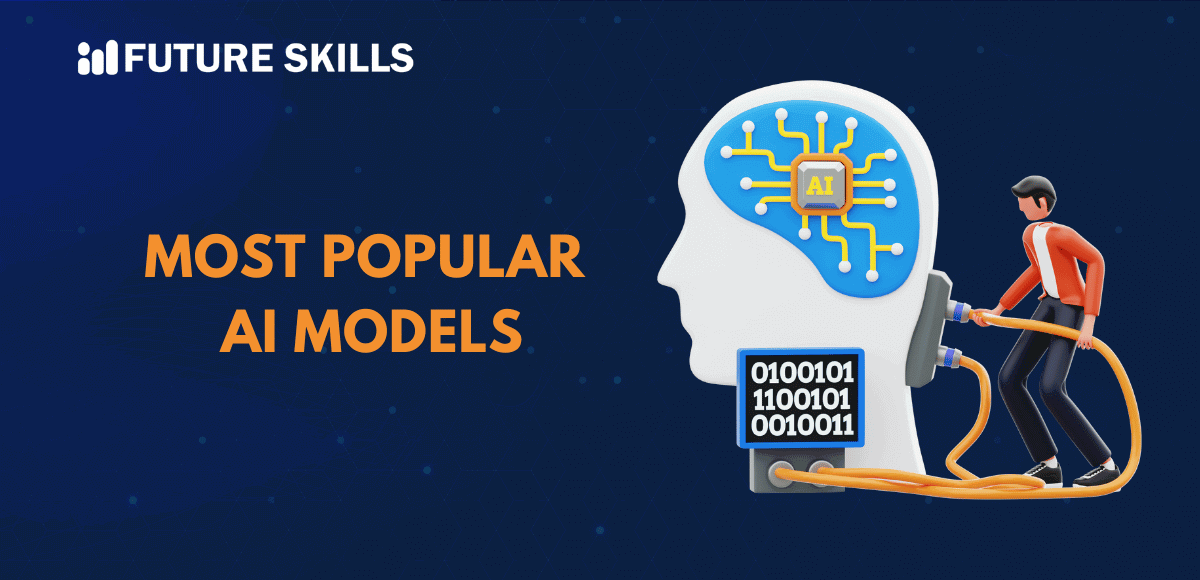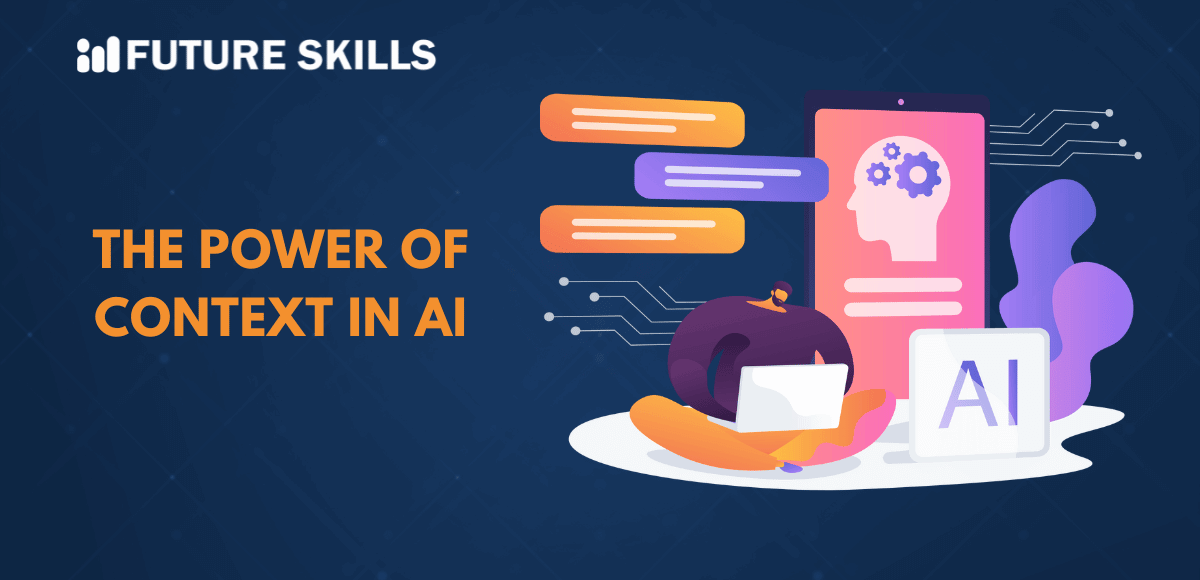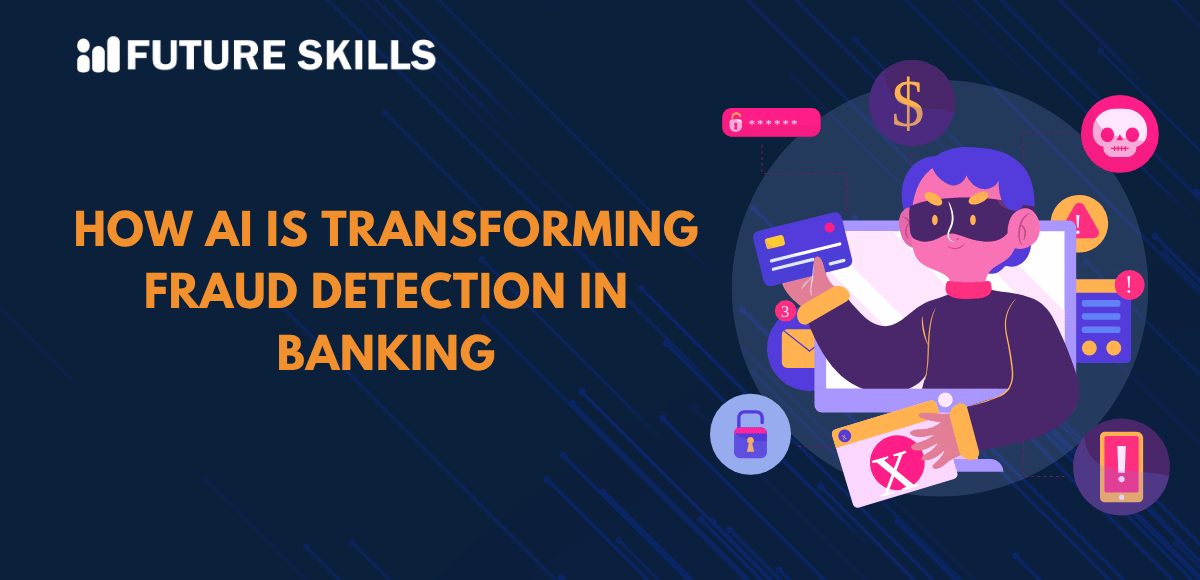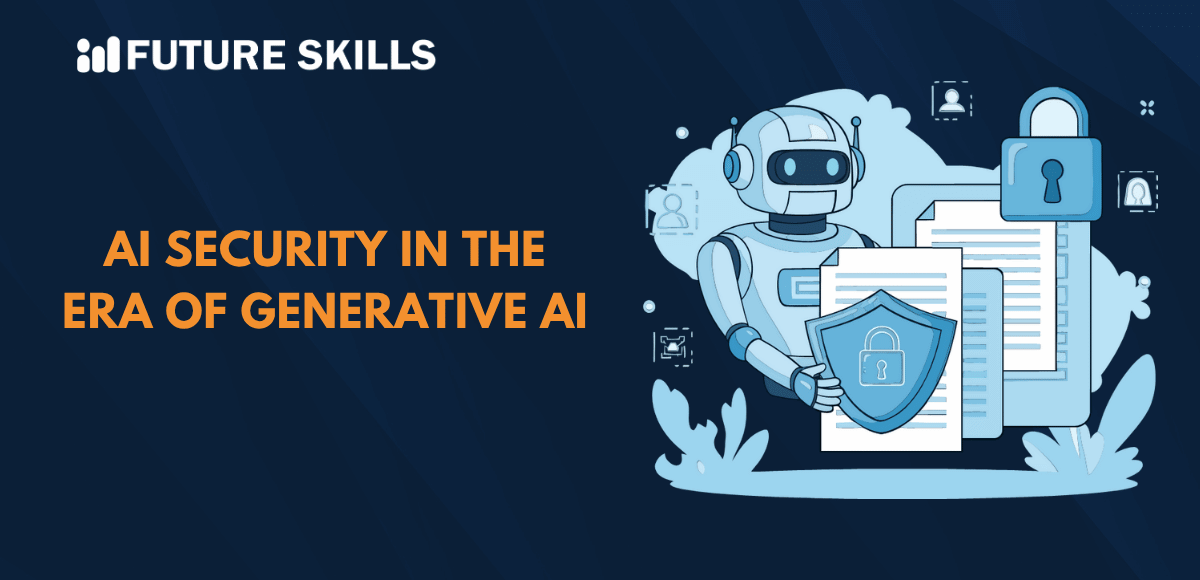Artificial intelligence is everywhere around us in the form of AI models. Whether you ask a question to Alexa or use self-driving cars, AI models are working their magic. If you want to find the top AI models, then you are curious about the future of AI technology. Let us identify the most promising AI models and their importance in the modern technology landscape.
Level up your AI skills and embark on a journey to build a successful career in AI with our Certified AI Professional (CAIP)™ program.
Understanding AI Models
As the world embraces AI at an unprecedented pace, it is reasonable to learn about the models that drive the AI revolution. The impressive capabilities of AI models, ranging from generating content to communicating with users like humans, make everyone curious about them. AI models are no longer limited to experiments in research labs as many of them have become powerful tools for transforming industries and everyday lives of people.
Before searching for answers to “Which AI models are the most popular right now?” you must know how AI models work. What are AI models? AI models are algorithms that train on large datasets to learn how to do specific tasks. The tasks for AI models may include making predictions, recognizing images or translating languages. You can find different types of AI models, based on their focus area and functionalities.
One of the common assumptions about AI models is that all of them are LLMs or large language models. On the contrary, there is more to AI models than LLMs. You can find many other types of artificial intelligence models, such as generative AI models, computer vision models, recommendation systems, transformer models and GANs.
Discovering the Top AI Models You Should Try in 2025
The technological landscape is growing with AI, as evident in diverse use cases of artificial intelligence. Whether it is content generation or creating code for new applications, AI models have a crucial role to play in every domain of technology. The following AI models list will help you learn about their distinct functionalities and advantages.
1. GPT-4o
Most of the ChatGPT users must have come across GPT-4o at some point. The distinctive trait of GPT-4o model is image generation. OpenAI has clearly mentioned that GPT-4o will be better at understanding vision and audio input than the existing models. On top of it, GPT-4o is significantly faster and around 50% cheaper with API integration.
With a 128k token context window, GPT-4o also showcases more context and better memory performance. The multimodal capabilities and accuracy of GPT-4o make it one of the promising AI models to watch out for.
Grab the opportunity to become a professional ChatGPT expert with our Certified ChatGPT Professional (CCGP)™ Certification course.
2. YOLO
The list of popular AI models might have missed out the YOLO model. YOLO or You Only Look Once is the top pick among most popular AI models for real-time object detection.
It is a trusted AI model for production-level applications, such as traffic monitoring, due to the features for identification and localization of multiple objects in images. YOLO leverages a one-shot architecture and completes its task in a single neural network pass, thereby ensuring faster performance, even on mobile phones.
3. LLaMA
Have you heard about the recent surge in the number of new open-source LLMs being released in the market? You would be surprised to know that most of them draw inspiration from LLaMA in some ways. Crafted by Meta, LLaMA is a different take on the GPT-style models by OpenAI.
The open-source nature of LLaMA has enabled many people to fine tune the models for different types of local apps. You can find instances of LLaMA-based models serving as the drivers of private GPT-style chatbots, local copilots and coding assistants.
4. Stable Diffusion
Almost every discussion about the best AI models will mention the importance of Stable Diffusion. It is the top model that helps you generate high-quality visuals without powerful cloud resources. As compared to other diffusion models that consumed a massive amount of resources, Stable Diffusion can run on consumer GPUs.
Stable Diffusion is an open-source model by Stability AI that you can run on a local machine to generate photorealistic images. The latest version, Stable Diffusion 3.5, has included a new Multimodal Diffusion Transformer, which supports complex prompts.
Learn how ChatGPT and AI can transform your career and boost your productivity with the free ChatGPT and AI Fundamentals Course.
5. Mistral 7B
Mistral 7B is one of the few AI models that have achieved the balance between quality and speed. As a dense model with 7B parameters, it offers significantly better performance for its size. The most distinctive traits of Mistral 7B are its speed and efficiency, which made Perplexity AI adopt the model. You can find Mistral 7B among the best AI inference models for its high performance.
On top of it, the model is also one of the best free models for developers due to its open-source nature. The best thing about Mistral 7B is that people use it for building everything, ranging from backend reasoning engines to chatbots.
6. BERT
Anyone who has been working with NLP must have some idea about BERT or Bidirectional Encoder Representations from Transformers. BERT is a deep learning language model crafted by Google to understand the context of words in a sentence with a transformer-based architecture. BERT deserves a place among the top AI models for transforming the ways in which AI reads and processes sentences.
Google deployed BERT in its search feature to ensure better interpretation of user queries. The popularity of BERT increased to such an extent that you can find it almost everywhere, ranging from virtual assistants and chatbots to the internal tools used by tech giants.
7. Claude 3.7 Sonnet
If you take a look at the popular AI models used in coding, Claude 3.7 Sonnet might be the best pick. As a matter of fact, many developers in online forums think that Claude 3.7 Sonnet is the best model for coding tasks. According to Anthropic, Claude 3.7 Sonnet is the first hybrid reasoning model that offers significant improvements in data analysis, planning and content generation.
Users can rely on the APIs to build applications according to their requirements. One of the most appealing features of Claude 3.7 Sonnet is the ability to extract information from images for data analysis.
8. Grok
Grok is another notable model that has been attracting a lot of attention in the AI space. It is a LLM crafted by xAI and offers direct integration with the social platform X. The biggest strength of Grok which makes it one of the most popular AI models is the real-time access to data from X. On top of it, the model has been trained explicitly for responding to edgy or controversial topics which other models will avoid.
Enroll now in the AI for Business Course to understand the role and benefits of AI in business and the integration of AI in business.
9. DeepSeek
The modern AI landscape welcomed DeepSeek as a better competitor to ChatGPT. Created in an independent research lab, DeepSeek represents a family of models which are open-source and offer better performance. For instance, the DeepSeek-VL model features multimodal capabilities while DeepSeek-Coder is a reliable pick for tasks that require complex reasoning.
10. Qwen
The final addition in this AI models list is Qwen, a group of open-source LLMs created by Alibaba. The family includes open-weight models that you can use on platforms like Hugging Face without any fees. One of the prominent strengths of Qwen is the fluency in Chinese NLP alongside expertise in English and other languages. It is also important to note that Qwen supports easier integration into agent workflows.
Final Thoughts
The review of the list of popular AI models in 2025 shows that you can tap into the AI landscape for addressing many existing problems. It is important to note that LLMs are not the only category of AI models that you should learn about. On the contrary, you can find the best AI models for your needs by reviewing the features and benefits of different models. Learn more about AI fundamentals from experts and find the top models right now.






